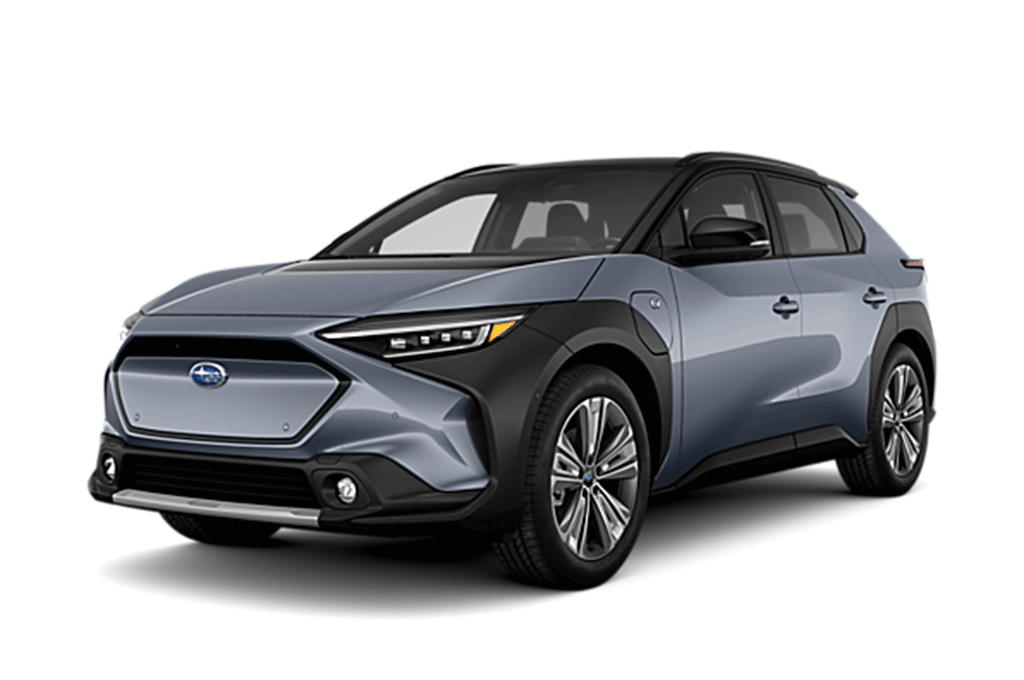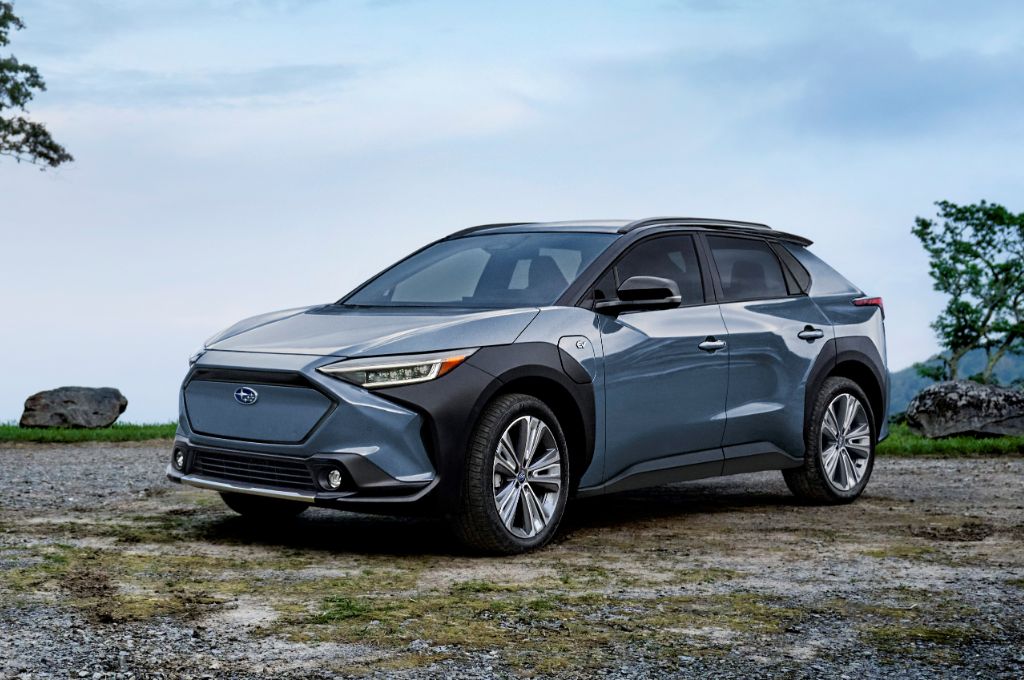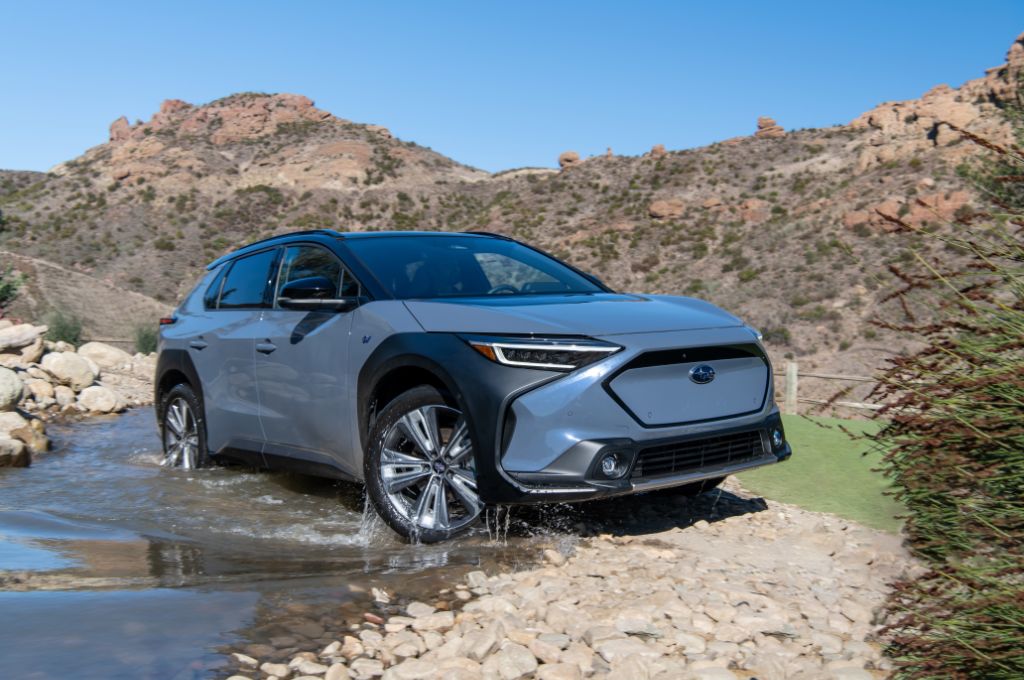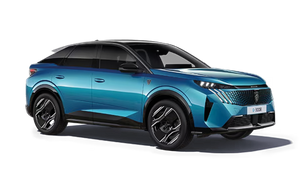It’s the result of what people in the industry like to call ‘badge engineering.’ It’s effectively a Toyota bZ4X dressed up with some Subaru trappings, though the visual similarities between the two are still quite startling. As such, it's not only a direct rival for its Toyota relation, but also something to consider as an alternative to the Kia EV6, Hyundai Ioniq 5, Nissan Ariya or the Tesla Model Y.
And right now, it’s the only electric Subaru you can buy and will remain so for the foreseeable future, at least until the next development of the brand’s relationship with Toyota.
Subaru Solterra Design
As far as looks go, you won’t be overly surprised to learn that it looks …a lot like its Toyota sibling. So you get the same devisive plastic wheelarches that add a bit of faux-ruggedness, but the Subaru version gets different headlights without the Toyota’s distinctive ‘eyebrow’. There’s also more of a shape to the front end thanks to a hexagonal ‘grille’, which marks the Subaru out - it’s a similar shape to the grilles used on the brand’s petrol powered and hybrid crossovers and SUVs.
Moving around the rear, the Solterra has separate taillights compared with the Toyota’s single full-width LED strip, and the tailgates are slightly different shapes. View the two cars from the side, however, and it makes for a difficult game of spot the difference. The basic shape of the Solterra is identical to the bZ4X, and it’s even available with the same wheels. The charging flap is found just behind the passenger side front wheel arch, while it’s available in five different colours, including Subaru’s trademark ‘Dark Blue Mica’ metallic.
In terms of dimensions, it’s 4,690mm long, 1,860mm wide and 1,650mm tall. Beyond the Toyota, its closest match in regards of shape and size is the Jaguar I-Pace.
Subaru Solterra Interior, Tech & Practicality
Unsurprisingly, and just like the exterior, the interior of the Soterra is also very similar, if not identical to the Toyota bZ4X’s confines. There’s a chunky, ruggedness to the layout of the dashboard and centre console, with a long, flowing panel rising up to the central infotainment area which is littered with good, old-fashioned physical buttons.
The touchscreen is a strongpoint, sizing up at an impressive 12.3-inches in size and being slick and sharp to operate. It’s bright, the graphics are crisp and pinpoint sharp, and it comes with all the usual smartphone mirroring apps (CarPlay and Android Auto) for those who like to tether up their smartphones over using Subaru’s own software interface.
The digital instrumentation is a little less impressive. It’s quite far set back from the dashboard, and ergonomically it’s a bit flawed too - depending on your height, the steering wheel (which is supposed to sit low so you can see the instruments) can get in the way and block out the information. But be warned - Subaru has attached bongs and chimes to every function. Even putting the car in reverse results in a continual, infuriating beep. We are truly not sure we could live with it.
The centre console is home to plenty of storage solutions, but there’s no glovebox to be found in the Solterra. Behind the passenger compartment is a useful 452 litres of boot space though.
And passenger space is pretty good as well. It’s a bit smaller than something like a Mustang Mach E or one of the bigger VW ID cars, but six-foot adults can get comfortable in the back. Material quality feels quite robust as well - it feels built to last.
There are two levels of spec, Limited and Touring, with Touring models coming with leather, a panoramic sunroof to make things bright and airy, wireless charging and a better audio setup.
Subaru Solterra Battery, Range and Charging
In terms of range and charging, the Solterra aims for the middle of the market. There’s only one battery available, 71kWh in net capacity with a useable capacity of 64kWh, which sends its power to a dual-motor, four-wheel-drive system - you can’t have the Solterra with the Toyota’s single motor option.
On the smaller 18-inch wheels of Limited spec, you’re supposed to see 288 miles of WLTP range, but that drops to 257 for the better-equipped Touring model on 20 inch wheels. In the real-world, that’s likely to be sub-200. Enough for pottering about, undoubtedly, but one assumes that a practical car like a mid-sized SUV might be expected to manage a bit more. It’s not supposed to be a city car.
On paper, the charging tech is pretty standard too. AC charging is capped at 7kW, but the Solterra can rapid charge at 150kW DC. 10-80% top-ups should be possible in around half an hour at a quick enough plug.
The problem we have is that the Solterra just wasn't getting anywhere near those figures when we drove it. The 2.0 miles/kWh consumption it registered in our time with the car (admittedly in chilly but not freezing weather) is comparable to much heavier and higher performance machines. You could realistically expect nearly 50% better efficiency from a Tesla.
Subaru Solterra Performance and Driving
Subarus have always been renowned for their all-wheel drive and general ruggedness - which is why the Solterra only comes with two motors, one at each end, for four-wheel-drive. They’re both 107bhp and make the Solterra perky rather than fast, with solid traction - there’s no tyre scrabble from a greasy junction with this. With zero to 62mph in just under seven seconds, you won’t be breaking any records, but it’s enough.
As for all the rest of it, the Subaru is actually pretty good. It feels better damped than the Toyota, and steers with slightly more precision. There’s a touch less side-to-side action on a bumpy road, and - if you can be bothered - it gets down a road with fluency. Like a lot of electric cars, it feels like all of the weight is carried very low, but you soon get used to it.
A big plus point? The brake regeneration can be altered on the fly using the paddles behing the steering wheel, though it could be more powerful - the most you can get, from the paddles or by pressing a button to summon maximum regeneration, is a gentle drag. The S-pedal mode increases this, but one-pedal driving is not possible in the Solterra.
True to Subaru heritage, the Solterra can handle a bit of gentle off-roading. It comes with a function called X-Mode, which is essentially a drive mode best suited to slippery and uneven surfaces, mimicking a low-range gearbox in a petrol-powered 4x4.
Subaru Solterra Pricing
As for the price, it’s not on the cheap side. The Solterra kicks off from £49,995 for the car in Limited trim. Externally, that means 18-inch wheels and no panoramic roof - those are saved for the £52,995 Touring version.
Key specification differences between the two include synthetic leather upholstery on Touring cars, as well as an electrically adjustable passenger seat (driver seat only in Limited), wireless phone charging, and a better, eight-speaker audio system.
Subaru Solterra Verdict
We think we might prefer the Solterra to the bZ4X. The all-wheel-drive version of the Toyota is the best version, and that's the default in the Subaru - and for less money, too. Granted, it's not an affordable electric SUV, and nor is Subaru's warranty quite as generous.
The problem here is that it’s still not efficient enough, and tonnes of decent competition already exists. Entering the market with a brand-new car that’s not a game changer makes it hard to make an impact in a market with newcomers arriving every week. Oh, and the bongs from EVERYTHING could drive you potty.





























